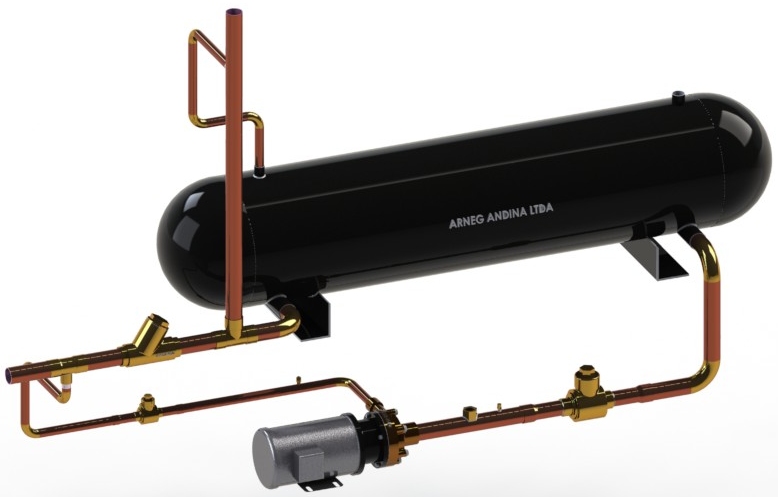about liquid refrigerant pumping
about liquid refrigerant pumping (LPA) is a simple, reliable way to improve refrigeration efficiencies. this technology modifies a conventional direct expansion (DX) refrigeration
system in such a way that average compressor load is reduced and cooling capacity is increased.

The core component is a highly reliable, seal-less, magnetically coupled pump, positioned in the liquid refrigerant line between the receiver and the thermal expansion valve. This technology is provided by Hy-Save, Inc., based in Portland, Oregon.
This Federal Technology Alert (FTA) outlines the operational theory, field performance (including savings and reliability), application range, and evaluation methods for the LPA in specific scenarios.
Energy-Saving Mechanism
The LPA offers a straightforward and dependable method for converting a refrigeration system to floating-head operation. This efficient mode allows the condenser to function at lower pressures and temperatures when ambient conditions are favorable. In an LPA retrofit, the pump mitigates head losses in the liquid line and dryer, preventing refrigerant boiling (flashing) before the expansion valve. By suppressing flash gas, the LPA enables a lower condensing set point (temperature or pressure). However, minimal savings are expected for systems already equipped with floating-head control or those that do not frequently operate under low ambient temperature conditions necessary for floating-head savings.
Applications include surge type liquid receivers that offer many benefits;

A surge type liquid receiver is a component used in refrigeration systems to manage the flow and storage of refrigerant. It acts as an expansion tank, accommodating the varying volume of liquid refrigerant as it moves through the system.
Benefits of Using a Surge Type Liquid Receiver:
- Stabilizes Refrigerant Flow: It helps in maintaining a consistent flow of refrigerant to the evaporators, even when the demand fluctuates.
- Prevents Liquid Flooding: By holding excess refrigerant, it prevents liquid refrigerant from flooding the compressor, which can cause damage.
- Enhances System Efficiency: It allows for better control of refrigerant levels, which can improve the overall efficiency of the refrigeration system.
- Maintains Subcooling: This type of receiver helps in maintaining subcooling in the liquid line, which is crucial for the efficient operation of the system.
Contact them today for more information.